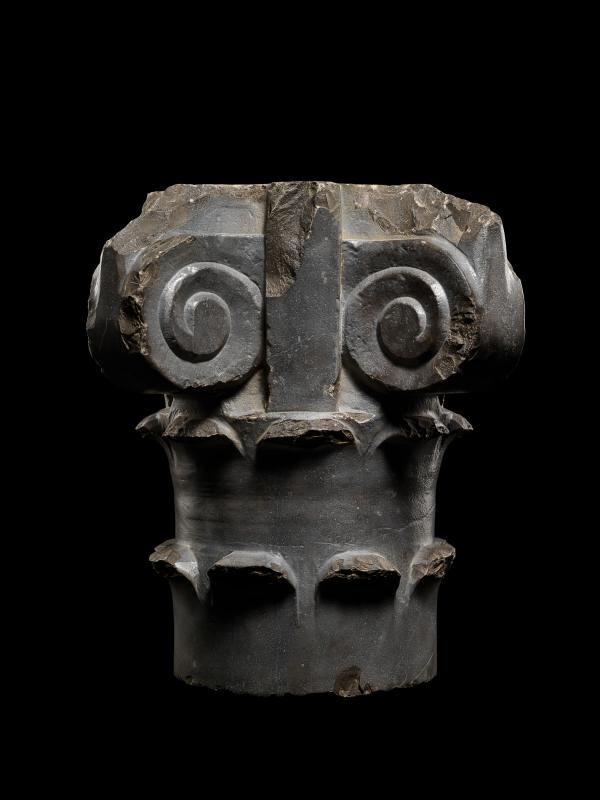Dating from the 13th–15th century, the Alhambra is one of the world’s most famous edifices and the best-preserved palace of medieval Islam. But before the Alhambra, there was another fortified palace built on the same hill—a spur of the Sierra Nevada mountains—known as Sabikah. This capital, along with several similar capitals as well as columns now in the Alhambra Museum, may have belonged to such an earlier though no longer extant building. Stone architectural elements from earlier, ruined structures were typically repurposed in new constructions not only to fulfill their actual function but at times as foundational elements that might only be revealed by excavations, or earthquakes and other natural events. From the late 19th through much of the 20th century, capitals, and even complete columns, often of unclear provenance, were frequently exported from Spain and found their way into European and American museum collections. In recent years, the legal export of such architectural elements has been carefully controlled and much curtailed.
This capital has an excellent provenance that supports locating it on the Sabikah. According to its Spanish export license, it was previously in the collection of Mariano Contreras Granja (1853–1912), architect and director of conservation at the Alhambra, and thence by descent to his daughter and granddaughter. Mariano Contreras Granja was the third generation in a family of important restorers of the Alhambra Palace. In 1821, an earthquake damaged the Alhambra, and an extensive repair program was initiated by the architect José Contreras in 1830. After the death of Contreras in 1847, his son Rafael Contreras Muñoz took over his work, continuing it for almost four decades, until he passed the work to his son, Mariano Contreras Granja. Given the family’s extended involvement in the Alhambra, it is possible that any one of these three generations acquired the present capital.
In addition to its outstanding provenance, the capital is also a thing of beauty, in terms of its exceptional coloring, which varies with the light, and its skillful carving. As we plan for the David Geffen Galleries and consider new ways of organizing the collection, we’re delighted the capital will be able to engage visitors in the transcultural arts of the Mediterranean both east and west and will have a welcome place among other architectural elements from Islamic Spain including from the Alhambra itself, such as a stucco plaque inscribed in Arabic and the springing of a large stucco arch, and from the period of the Reconquest in Seville, a group of superb wood ceiling panels datable to the 15th century.
During our 37th annual Collectors Committee Weekend (April 21–22, 2023), members of LACMA's Collectors Committee generously helped the museum acquire 10 works of art spanning a breadth of eras and cultures. We'll be sharing information about these acquisitions throughout the week here on Unframed.



